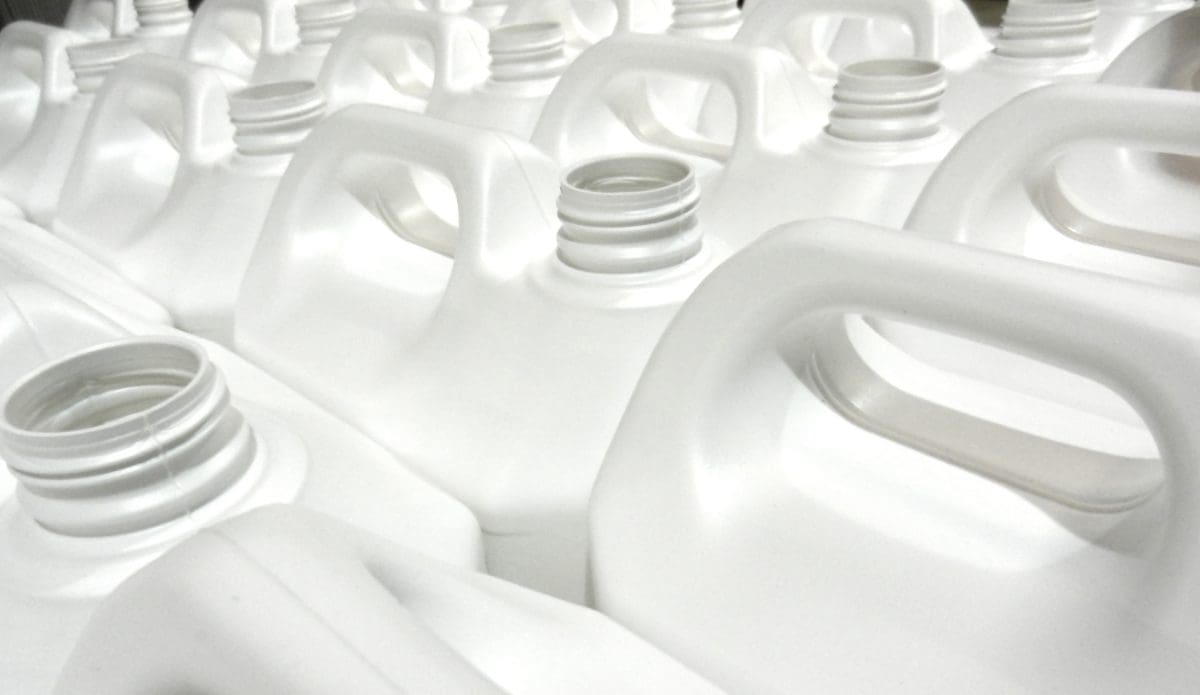
Secure, strong, lightweight, and easy to fill and pour, jerry cans are the easiest way to transport and dispense up to 25L of liquids.
During the second world war, the Allies created fuel cans to allow soldiers to carry 25 litres of fuel. These were similar to a briefcase, but triangular. They worked but had a number of flaws. However, the Allies found the German-designed fuel cans to be designed much better, and immediately reversed- engineered them and started their own line of production. These fuel cans, quickly dubbed the ‘Jerry can’ were superior in every way. This was because the:
- Handles were ideally placed to allow one or two people to carry and easy to pour
- Indentations in the side made it structurally stronger, less likely to be dented or damaged or leak in a fall
- Large spout meant filling and dispensing was ultra-fast
- Rectangular shape made it stackable
- Lid had a securing pin in the closure retainer so was unlikely to loosen or fall off
The design was so efficient, functional, and robust, it’s almost exactly the same today. While we generally opt for plastic now, the principles of the design are the same as the one the Germans invented all those years ago—and that is the hallmark of great design.
Jerry Can Uses
There are more ways to use jerry cans than just filling it with petrol for your lawnmower. It’s versatile for transporting almost any liquid. This includes:
- Detergents
- Water
- Oils
- Solvents
- Cleaning fluids
- Diesel and gasoline
- Drinks (in food-safe plastic)
The small jerry cans are ideal for decanting from bigger liquid storage containers. Taps can easily be added to the side so they easily can be used to dispense things like drinking water, cleaning fluids, solvents, or almost any liquid you’ll use at work. For those who buy liquids in bulk such as cleaning liquids or detergents, storing them in a large jerry can with a tap makes it easy to measure out just how much you need with no waste.
Jerry Can Construction
There are two main types of jerry cans, those made from plastic, or metal.
While metal was the material of choice historically, it isn’t as common now. The metal was typically lined with a corrosion-proof seal on the inside to stop leaks and contamination of the liquids inside. Steel jerry cans are still available for use with fuel and some other chemicals, but it’s heavy and prone to dents.
Now, you’re far more likely to find jerry cans made from HDPE plastic. It’s strong, flexible, resistant to leaching or corrosion of chemicals, and it can be food safe. It’s lighter than steel and less likely to be dented. HDPE is also highly recyclable. HDPE is convenient, stable, robust, and the preferred choice for most industries.
Need Large Jerry Cans?
If you need to tote 20L of liquid around, then our large, food grade jerry can is perfect. This is made from HDPE plastic, and is safe for a variety of liquids designed for consumption. It’s also approved for dangerous goods packing groups II and III. This comes with a 58mm cap which is tamper evident, and a pre-drilled hole and bung. A 20mm tap with a ¾” BSP thread can be purchased if needed to dispense the liquid.
Want Small Jerry Cans?
If you need smaller jerry cans, we have:
- 1 litre jerry can in natural or white
- 2 litre jerry can in natural or white
- 4 litre jerry can in natural
- 5 litre jerry can in natural or white
- 10 litre jerry can in natural
- 20mm tap for 5L, 10L jerry cans
These are suitable for commercial or domestic use, and are made from hard-wearing HDPE plastic. They are food safe, with a tamper evident lid.
Plastic Jerry Cans NZ Supplier
Here at IFP, we are 100% NZ owned and operated. Our products are made here in Auckland, with focus on sustainable and responsible manufacturing. If you want large jerry cans, or maybe another way to transport your liquids, contact us on +64 9 636 9193 or info@ifpgroup.co.nz to chat.


